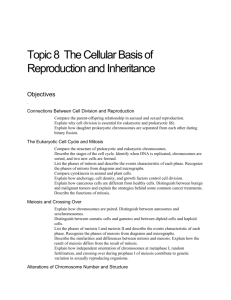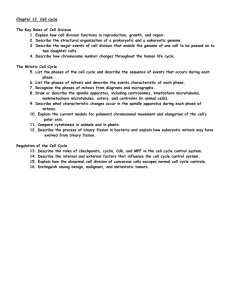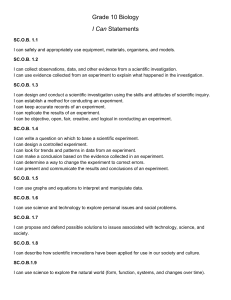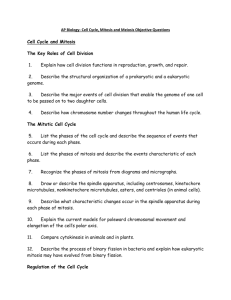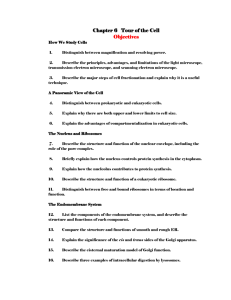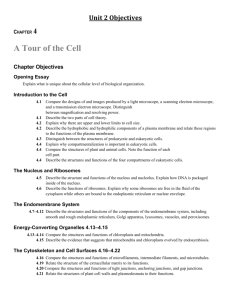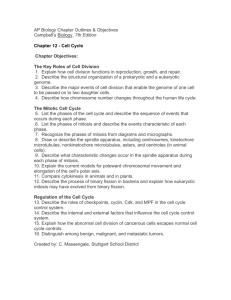Summer Unit 2 Exam Study Guide
advertisement
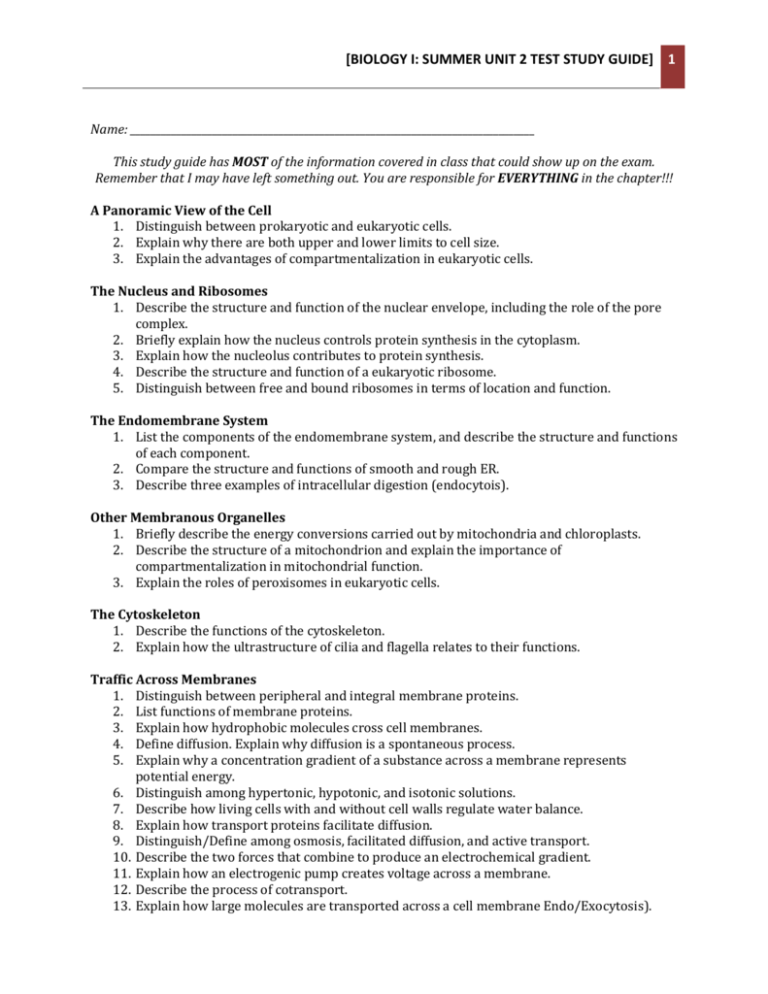
[BIOLOGY I: SUMMER UNIT 2 TEST STUDY GUIDE] 1 Name: _______________________________________________________________________________ This study guide has MOST of the information covered in class that could show up on the exam. Remember that I may have left something out. You are responsible for EVERYTHING in the chapter!!! A Panoramic View of the Cell 1. Distinguish between prokaryotic and eukaryotic cells. 2. Explain why there are both upper and lower limits to cell size. 3. Explain the advantages of compartmentalization in eukaryotic cells. The Nucleus and Ribosomes 1. Describe the structure and function of the nuclear envelope, including the role of the pore complex. 2. Briefly explain how the nucleus controls protein synthesis in the cytoplasm. 3. Explain how the nucleolus contributes to protein synthesis. 4. Describe the structure and function of a eukaryotic ribosome. 5. Distinguish between free and bound ribosomes in terms of location and function. The Endomembrane System 1. List the components of the endomembrane system, and describe the structure and functions of each component. 2. Compare the structure and functions of smooth and rough ER. 3. Describe three examples of intracellular digestion (endocytois). Other Membranous Organelles 1. Briefly describe the energy conversions carried out by mitochondria and chloroplasts. 2. Describe the structure of a mitochondrion and explain the importance of compartmentalization in mitochondrial function. 3. Explain the roles of peroxisomes in eukaryotic cells. The Cytoskeleton 1. Describe the functions of the cytoskeleton. 2. Explain how the ultrastructure of cilia and flagella relates to their functions. Traffic Across Membranes 1. Distinguish between peripheral and integral membrane proteins. 2. List functions of membrane proteins. 3. Explain how hydrophobic molecules cross cell membranes. 4. Define diffusion. Explain why diffusion is a spontaneous process. 5. Explain why a concentration gradient of a substance across a membrane represents potential energy. 6. Distinguish among hypertonic, hypotonic, and isotonic solutions. 7. Describe how living cells with and without cell walls regulate water balance. 8. Explain how transport proteins facilitate diffusion. 9. Distinguish/Define among osmosis, facilitated diffusion, and active transport. 10. Describe the two forces that combine to produce an electrochemical gradient. 11. Explain how an electrogenic pump creates voltage across a membrane. 12. Describe the process of cotransport. 13. Explain how large molecules are transported across a cell membrane Endo/Exocytosis). [BIOLOGY I: SUMMER UNIT 2 TEST STUDY GUIDE] 2 The Key Roles of Cell Division 1. Explain how cell division functions in reproduction, growth, and repair. 2. Describe the structural organization of a prokaryotic and a eukaryotic genome. 3. Describe the major events of cell division that enable the genome of one cell to be passed on to two daughter cells. 4. Describe how chromosome number changes throughout the human life cycle. The Mitotic Cell Cycle 1. List the phases of the cell cycle and describe the sequence of events that occurs during each phase. 2. List the phases of mitosis and describe the events characteristic of each phase. 3. Recognize the phases of mitosis from diagrams and micrographs. 4. Draw or describe the spindle apparatus, including centrosomes, kinetochore microtubules, nonkinetochore microtubules, asters, and centrioles (in animal cells). 5. Describe what characteristic changes occur in the spindle apparatus during each phase of mitosis. 6. Explain the current models for poleward chromosomal movement and elongation of the cell’s polar axis. 7. Compare cytokinesis in animals and in plants. 8. Describe the process of binary fission in bacteria and explain how eukaryotic mitosis may have evolved from binary fission. The Basis of Heredity 1. Explain in general terms how traits are transmitted from parents to offspring. 2. Distinguish between asexual and sexual reproduction. The Role of Meiosis in Sexual Life Cycles 1. Distinguish between the following pairs of terms: a. somatic cell and gamete b. autosome and sex chromosome 2. Explain how haploid and diploid cells differ from each other. State which cells in the human body are diploid and which are haploid. 3. Explain why fertilization and meiosis must alternate in all sexual life cycles. 4. Distinguish among the three life-cycle patterns characteristic of eukaryotes, and name one organism that displays each pattern. 5. List the phases of meiosis I and meiosis II and describe the events characteristic of each phase. 6. Recognize the phases of meiosis from diagrams or micrographs. 7. Describe the process of synapsis during prophase I and explain how genetic recombination occurs. 8. Describe three events that occur during meiosis I but not during mitosis. Origins of Genetic Variation 1. Explain how independent assortment, crossing over, and random fertilization contribute to genetic variation in sexually reproducing organisms. 2. Explain why heritable variation is crucial to Darwin ’s theory of evolution by natural selection
